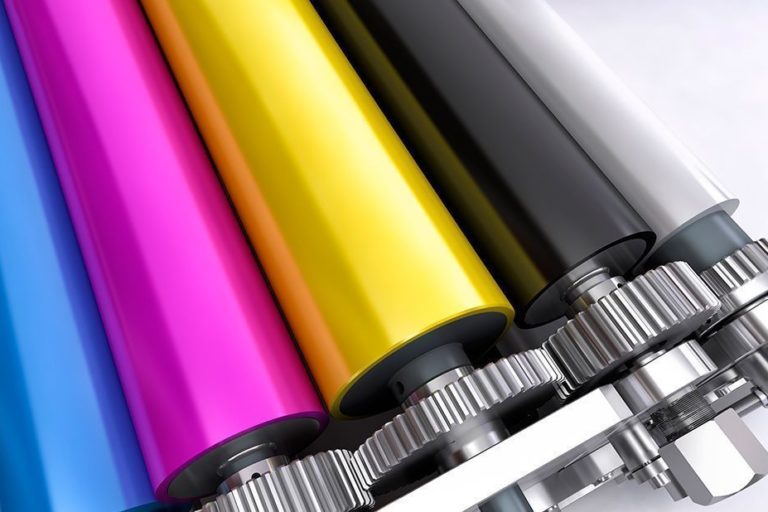Smaller quantities and quick turnaround or slower turnaround with huge savings? Let’s find out which one is right for you.
Digital Printing
Digital printers are essentially very high-tech color copiers (printshops will hate us for saying that!) But one of the largest suppliers in the industry is Xerox (ring any bells?). The technology was invented in the early 90’s and uses color toner instead of ink. Print runs are super-fast as no “plates” or color separations have to be made. Simply load up a PDF and start printing! This makes it much more cost-effective when producing small quantities. You’ll also find these kinds of machines at printshops all around town, as they’re relatively inexpensive to own (usually less than $100,000). This allows local printshops to take advantage of being able to offer full-color printing for everything from business cards, to postcards, to flyers and brochures. As of 2018, digital printing accounted for almost 20% of all color printing worldwide.
We use digital printing for flyers and brochures whenever ordering small quantities (50-100 – NOTE: offset printers won’t even print in those quantities). Since local printshops all have these machines nowadays, not only is turnaround fast but delivery or pickup means shipping is often not necessary.
Offset Printing
You can tell by the photo that these printers are no joke! They’re HUGE (think 1/3 of a football field huge) and thus require a much larger building and highly specialized installations with unique vibration-proof foundations in most cases. These machines often cost upward of 1.5 – 2 million dollars and require skilled press operators. Hence, these will not be found in every city like their digital counterparts. What offset printing offers, however, is incredible speed, larger paper sizes, and much, much lower costs on large quantities. These things print at 18,000 impressions per hour, so you can imagine how quickly they’ll handle your print job of 1,000–5,000 pieces!! Literally just minutes!!! However, the setup for each print run is MUCH more involved than digital printing, which explains why it actually takes longer to go this route.
These presses use liquid ink instead of toner and are often considered more accurate than digital printing (though most people probably can’t tell the difference). The typical turnaround time is 3–5 days, and since they’re not found in every city, the finished pieces will also need to be shipped to you, necessitating UPS or FedEx shipping times to be factored into the equation. The good news is that the cost savings are as huge as the printing presses themselves! For any of your mass marketing and mailings, we’ll likely be using one of our offset print firms.
Have questions?? Give us a call!
Do you have any questions regarding printing??? We’re here to help…and no question is too simple. One of our team members will be happy to help you decide which print method makes the most sense for your next project.

